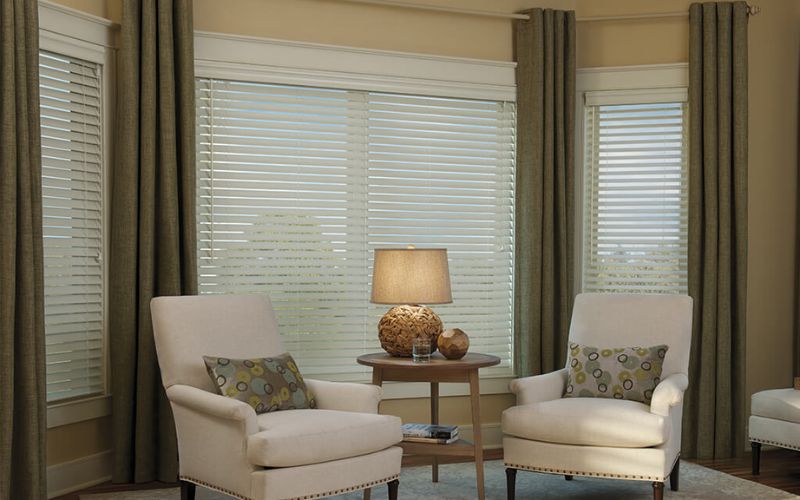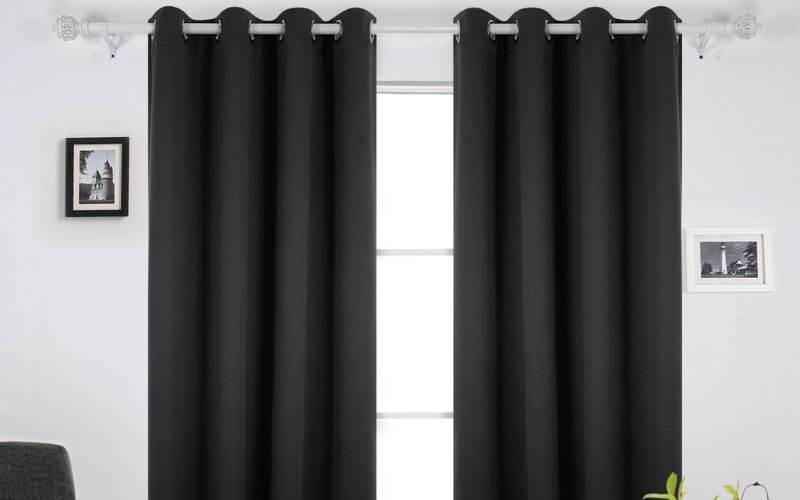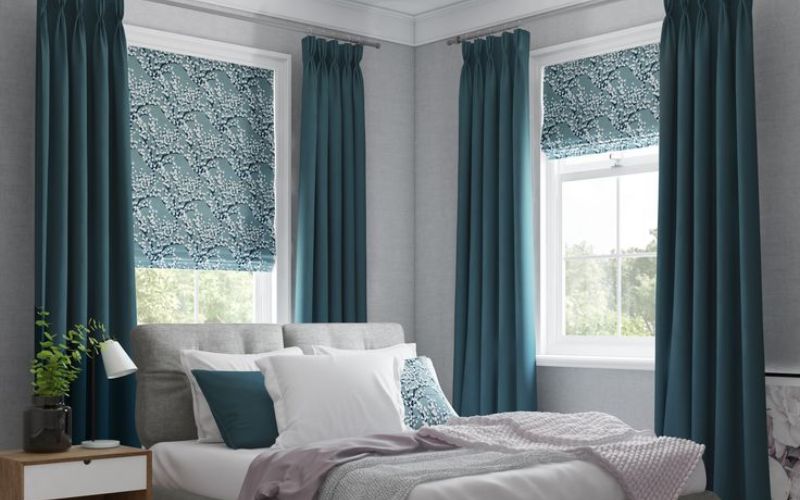Controlling noise in your home is important for comfort. Loud neighbors, traffic sounds, and noisy hobbies can all negatively impact being able to relax, focus, or get quality sleep. Soundproof curtains and blinds can help reduce external and internal noise without disrupting your décor.
But how well do these products work, and is one better than the other? This article will compare the effectiveness, pros and cons, and ideal uses for soundproof curtains vs blinds.
How Does Soundproofing Work?
It is helpful to know the basics of how soundproofing works in general before getting into the details of curtains and blinds. Sound moves through the air as waves and movements. To stop this, a good barrier should stop and soak up shocks instead of sending them back into the room.
Sound waves will be blocked better by things that are heavier and thicker. Sound waves lose energy as they go through the medium, which reduces noise even more. There are some materials and buildings that are very good at absorbing vibrations while also being heavy enough to make a solid barrier.
Comparing Soundproof Curtains and Blinds

With a better understanding of basic acoustics, we can now assess curtains versus blinds based on several key factors like materials, construction, coverage area, cost, appearance, and ease of installation/use.
Materials
The main component which determines deadening capabilities is the fabric itself. Curtains are typically made from velvet, fleece, felt, quilted fabrics, or dense woven materials like canvas or suede. Many incorporate multiple thick layers as well as mass-loaded vinyl, insulation, foam, or other sound-dampening materials. Blinds use metal, wood, vinyl, plastic, or acrylic rather than fabric.
Construction
Curtain panels can be solid or lined with extra layers to improve sound absorption, including weighted hems or grommets for total coverage and hug walls to prevent gaps. Window blinds feature slats designed to eliminate space for vibrations to escape, plus block light better. Some offer clear slats for unobstructed views. They can be rolled or stacked according to use and decorative preferences. Blackout options are excellent at containing both sound and light.
Coverage Area
The bigger the surface area covered, the more noise that is prevented from passing through. Tall, ceiling-to-floor curtains can be specified based on room dimensions to ensure all or the majority of walls are blocked. Adjustability helps maximize coverage, too. With blinds, there can still be leakage between and around the slats, depending on materials/quality. Multiple window installations are often required for full coverage.
Cost
The cost of high-quality window curtains is influenced by factors such as size, level of tailoring, and the materials they are made of. However, they are very cheap and less expensive than blinds, especially for how much coverage they provide. It costs more for blinds that are custom-made to fit windows or doors that aren’t standard sizes. Maintenance and cleaning costs should also be taken into account.
Appearance
Both types of products come in a huge selection of colors, textures, opacities, and decorative elements that can be used to fit the style of any room. Blinds are more simple because they blend in with their surroundings instead of standing out, while curtain styles tend to make a bigger visual effect. Some people like cloth window treatments better than metal and plastic slatted systems that look more industrial.
Ideal Use Cases of Soundproof Curtains and Blinds
 Here are key scenarios where curtains or blinds have distinct advantages:
Here are key scenarios where curtains or blinds have distinct advantages:
Soundproof Curtains Ideal For:
- Bedrooms – blackout & noise solutions
- Large/tall windows – maximize coverage
- Rental properties – easy install
- Historically styled spaces – aesthetically suited
- Nurseries – safer with minimal cords
Soundproof Blinds Ideal For:
- Smaller windows – tailored sizes
- Home theaters – light & noise control
- Bathrooms/kitchens – moisture resistant
- Clean room spaces – limit contamination
- Skylights/angled windows – better conformity
Soundproof Curtains Vs. Blinds: Installation Challenges
There are some things to think about if you want to install silent curtains or blinds on your own. If curtains are made of thick layers or noise-blocking materials that are built-in, they can be heavy and hard to hang correctly.
It takes skill to hang floor-to-ceiling panels straight without gaps, even when they have holes. It takes skill to put down soundproofing or blackout backing lining properly, as well. When mounting blinds, it’s important to be specific about the size, placement, and mounting, especially if the wall or window frame isn’t smooth.
To get an exact fit, you also need to be precise when you cut. Electric wiring for motorized blinds is also more complicated than wiring for simple curtains that you pull down by hand. If you don’t have good DIY skills or someone to help you, it’s smart to hire a professional installer.
By taking the right measurements and thinking about power sources for electric operation when placing the order, you can make sure that a lack of knowledge or planning doesn’t harm the installation.
Conclusion
Whether soundproof curtains or blinds are the best way to treat noise depends on the needs of the room, the noise problems that are happening, personal preference, and budget. When installed correctly, high-quality products from either group can cut down on noise transfer by a large amount and make spaces quiet and free of outside noise.
Focus on getting the most physical covering area as much as you can. If the main method doesn’t fully fix hearing problems on its own, layering can also make it work better. You can make an informed choice between curtains and blinds for your specific wants and living space by comparing them in a smart way that takes all of these things into account.





